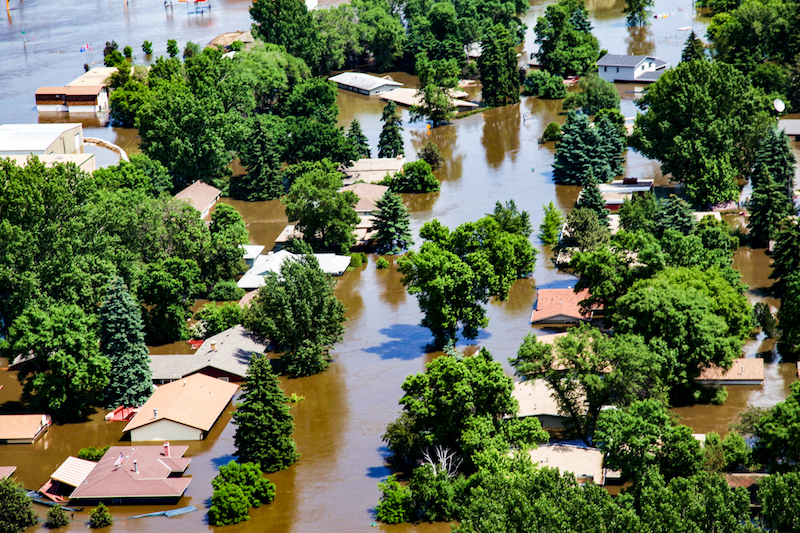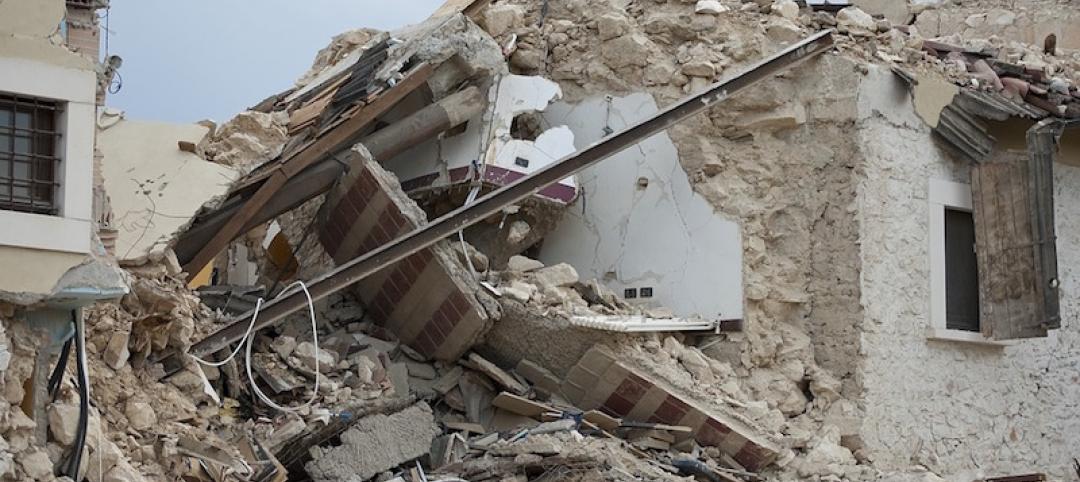Last June, Minot, N.D., received $74.3 million it was awarded in January 2016 as one of the winners of HUD’s resilience competition. The city, which was hit hard by flooding in 2011, will use that money over the next five years to reduce flood risks and improve water quality, build resilient and affordable neighborhoods, and diversify its economy.
This is part of a much larger flood-control effort that could cost up to $700 million, and involves FEMA, the Army Corps of Engineers, the state of North Dakota, and Minot, which will kick in $337 million over the next decade, says John Zakian, a former consultant with New York City’s resilience program, who now manages Minot’s National Disaster Resilience Program.
About half of the HUD money, $20 million, is financing the buyout of 170 single-family homes, and 190 total properties, along the river, tearing them down and turning that area into wetlands and flood barriers. Another $12 million was set aside for building multifamily housing, and to acquire property for a homeless shelter and downtown park, outside of the new flood plain.
Zakian says the city mandated the sale of the homes, but only had to invoke eminent domain on three houses.
Minot’s actions are further evidence that climate-induced migration—a/k/a relocation of populations at risk—is no longer off the table for municipalities as part of their disaster resilience strategies. And with FEMA’s National Flood Insurance Program already $25 billion in debt to the U.S. Treasury, rebuilding in vulnerable areas gets more financially precarious by the day.
“Eventually, people are going to have to face up to this reality,” says Rachel Minneri, who oversees AIA’s disaster assistance, resilience, adaptation, and sustainable community development programs. She points out that while FEMA doesn’t publish information about relocations, they’re actually a lot more common than is generally perceived.
Some examples of places where relocations are more than idle chatter:
- After being flooded in 2013, Boulder County in Colorado initiated a “Building Back Better” program that included buying back flood-damaged properties that would pose a future high risk, and turning those properties into undeveloped land in perpetuity. The county paid $26.8 million to acquire 46 properties, and was wrapping up demolition in September 2017;
- Hundreds of residents in Ottawa, Ont., abandoned their homes to escape record flooding in April. The city has told homeowners they could apply for government assistance to rebuild or repair one more time, and that’s it;
- Oregon school districts have been pulling schools out of tsunami zones, says Erica Fischer, PhD, PE, an assistant professor at Oregon State University who, until last August, was a design engineer with Degenkolb Engineers;
- Louisiana’s new master plan calls for paying 20,000 coastal residents to relocate. The state is currently engaged in a $48 million pilot program that includes relocating residents of 29 homes on Isle de Jean Charles, a narrow island that’s sinking into the Gulf of Mexico.
It’s worth noting, too, that only 17% of Houston-area homeowners have flood insurance, and federal disaster relief is capped at $33,000, hardly enough on its own to rebuild a destroyed house.
But convincing people to relocate is a psychological hurdle: just look at how many ignore evacuation orders, or keep returning, year after year, to regions afflicted by floods, tornados, and fires. Mandated relocation also devalues the forsaken property. And what still isn’t clear, says Josh Sawislak, AECOM’s Global Director of Resilience, is the value of such property beyond its existing primary function.
But if the government and insurers start cutting off, or even significantly reducing, dollars to rebuild and restore, resilience is going to mean relocation for a lot more at-risk Americans. “Those discussions are going to happen,” says Illya Azaroff of +LAB Architects and Experimentation in Brooklyn, N.Y., which has started downzoning coastal neighborhoods like Red Hook, and upzoning places outside of the borough’s flood plain.
Related Stories
Codes and Standards | Apr 5, 2017
Updated AIA Disaster Assistance Handbook released with significant enhancements
Updates provide guidance on how design and construction pros and emergency managers can work together to prepare for and respond to disasters.
Codes and Standards | Jan 31, 2017
Planning for world’s first floating city underway
New approach to resiliency examined in French Polynesia.
Sustainability | Jan 24, 2017
From an industrial park to an eco-neighborhood in Brussels, Belgium
At the heart of Vincent Callebaut Architectures’ eco-neighborhood will be three 100-meter-tall Vertical Forests.
Resiliency | Nov 3, 2016
Future-proofing urban waterfronts
CallisonRTKL’s Nathan Cherry discusses hurricanes, the San Francisco waterfront, and how we can future-proof our urban waterfronts.
Resiliency | Oct 5, 2016
San Francisco’s 181 Fremont will become the most earthquake-resilient building on the West Coast
The building has achieved REDi Gold Rating, resilience-based design guidelines developed by Arup that establish a new benchmark for seismic construction.
Sustainability | Sep 22, 2016
Is ‘Growroom’ a glimpse into the future of urban agriculture?
Growroom’s spherical shape means it can also double as a covered outdoor public space.
Regulations | Aug 31, 2016
FEMA wants to toughen flood regulation on projects using federal funds
The proposal ‘would essentially rewrite the current 100-year flood standard.’
Sports and Recreational Facilities | Aug 22, 2016
The Hills of Governors Island reach completion one year ahead of schedule
The man made hills are the latest attraction to open on the island that has been under development since 2006.
Resiliency | Aug 10, 2016
White House pushes for better finance strategies for disaster mitigation and resilience
The move highlights innovative insurance, mortgage, tax, and finance-based strategies.
Seismic Design | Jul 28, 2016
Risk of man-made earthquakes now factor in seismic hazard analysis
Significant risk increases seen in some areas of the U.S.
















